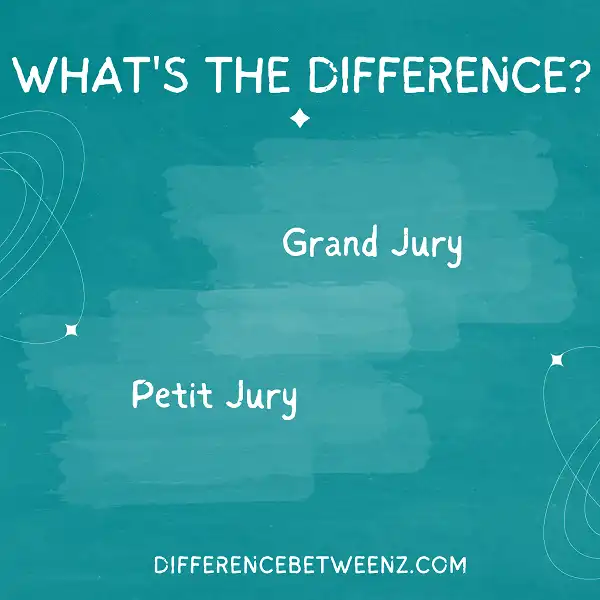Understanding the difference between a grand jury and petit jury can be confusing – after all, in both cases, jurors are called to serve on behalf of the court system. However, though these two types of juries may share some similarities, there are also important distinctions that set them apart. In this blog post, we’ll cover everything you need to know about grand juries and petit juries: from defining each type of court proceeding to identifying the responsibilities of those serving on one or the other. Read on for an in-depth look at how a grand jury and petit jury work – it’s critical knowledge if you ever find yourself summoned to fulfill either role!
What is Grand Jury?
Grand Jury is a group of citizens convened to perform an independent investigation and apply the law in criminal cases. Grand Jury is considered as an important feature of the American legal system that holds prosecutors accountable for their decisions and presents the district attorney with the evidence to determine if the case merits a criminal trial.
Grand juries are sworn in by a presiding judge, carefully selected by the government authorities, to be impartial and unbiased. Grand Juries have the freedom to question witnesses, examine records, study evidence and decide whether or not there is sufficient evidence to refer the case to trial. Grand Jury has been credited for protecting citizens against law enforcement abuse and eliminating groundless prosecutions.
What is Petit Jury?
Petit Jury, also known as a trial jury or a sworn jury, is selected from the public to hear and evaluate evidence in a court of law. Petit juries have an important role in ensuring justice; they are responsible for determining guilt or innocence based on the facts presented before them.
Petit juries play a vital part in our judicial system and represent the public’s opinion about the case at hand. They are typically composed of 12 people who are required to agree unanimously on a verdict. Petit juries provide an invaluable service by helping ensure that justice is attained by providing an impartial and independent opinion on cases brought before them.
Difference Between Grand Jury and Petit Jury
Grand Jury and Petit Jury are two types of juries in the legal system.
- Grand Juries comprise of up to 23 people and is used by prosecutors to decide if a person should be charged with a crime while Petit Juries, which typically have 12 jurors, weigh evidence during a trial and decide whether a defendant is innocent or guilty.
- Grand Juries have more favorable conditions for prosecutors as they do not require unanimity, only requiring some jurors to agree that the prosecution has enough evidence for an indictment, while the Petit Jury usually requires unanimity amongst the entire jury for a verdict.
Grand Juries also operate in secret with no access given to reporters or even defendants who may want to challenge statements made against them by witnesses. The increased secrecy makes Grand Jurors very powerful in deciding someone’s criminal fate.
Conclusion
A grand jury is composed of a larger group of people than a petit jury, and it decides whether there is enough evidence to indict a person for a crime. A petit jury hears cases and decides on the guilt or innocence of the defendant. Grand juries are less common than petit juries.


